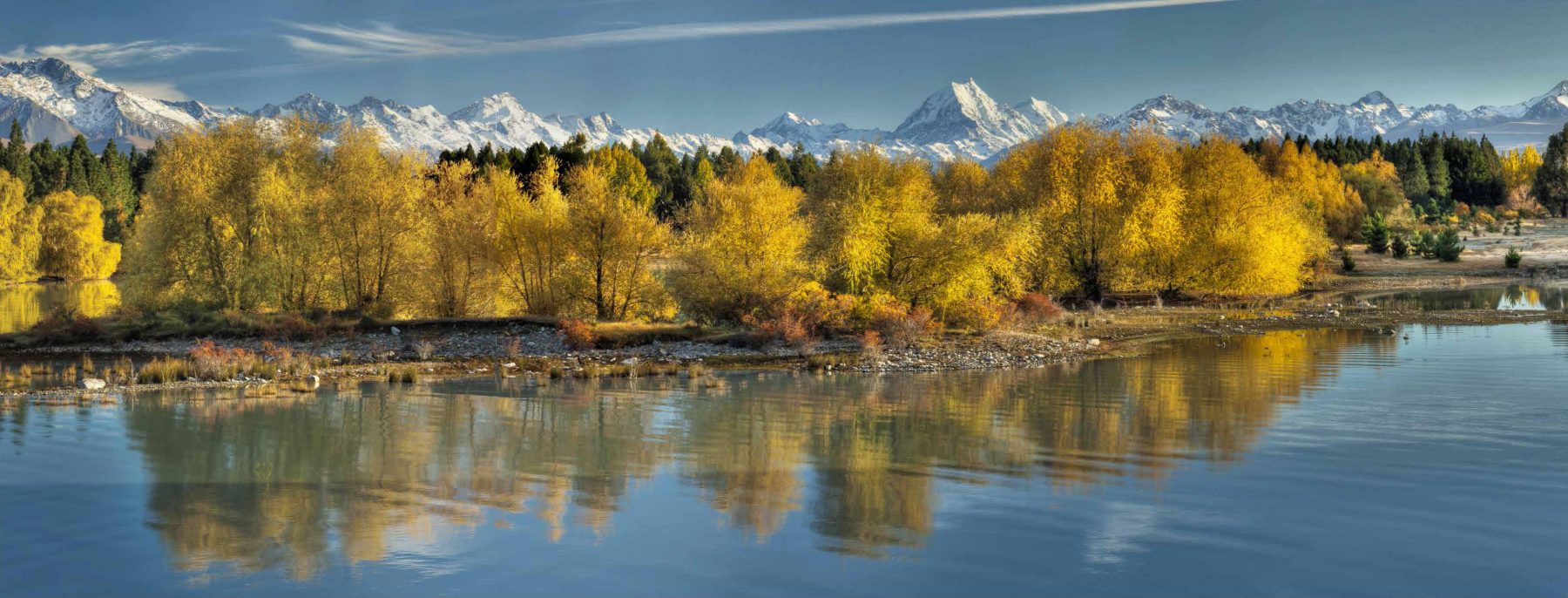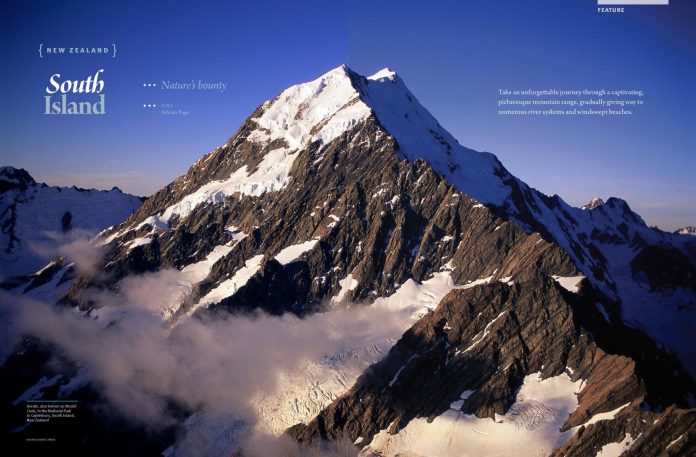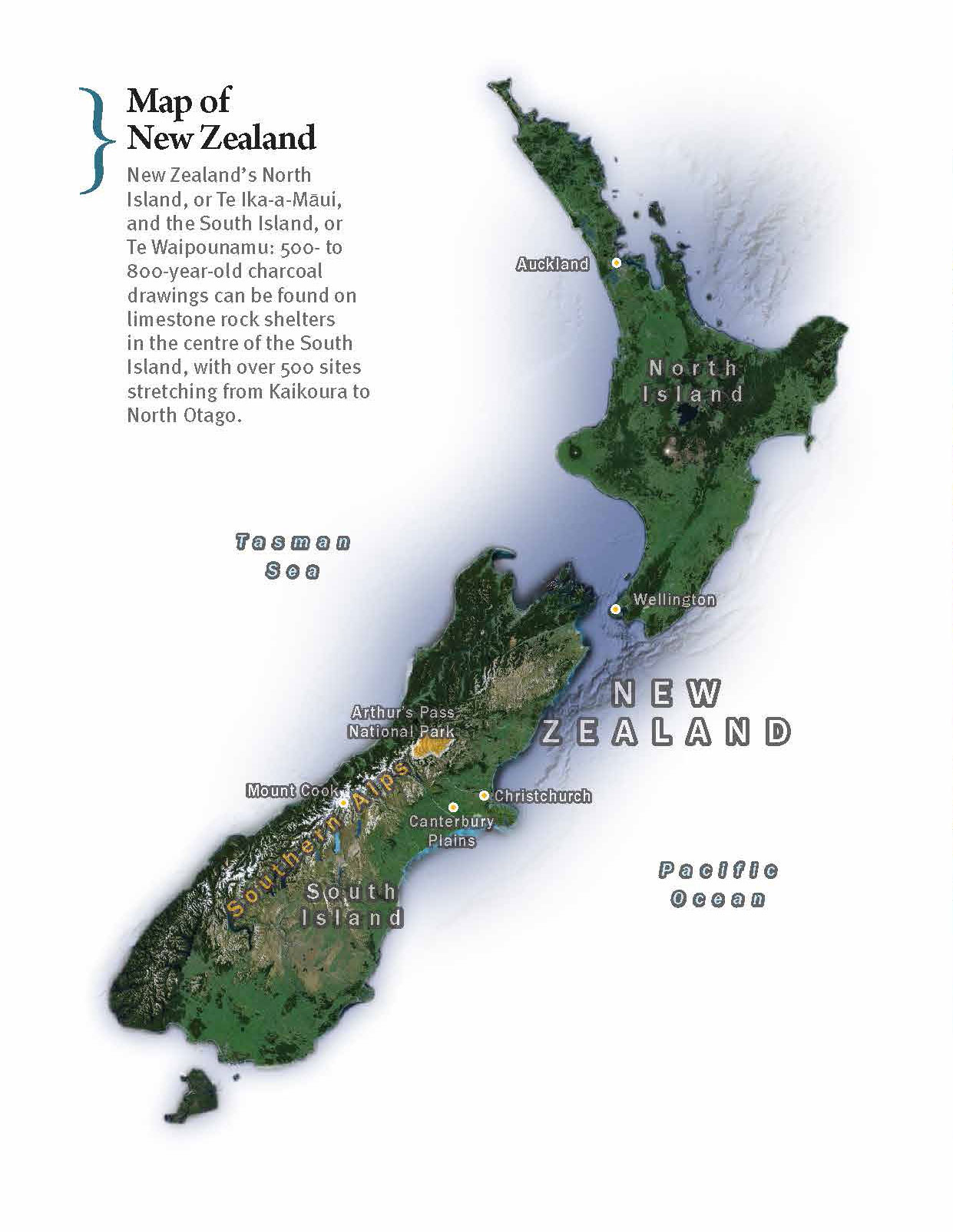By Adrian Page. (Photo by Kevin Schafer/Corbis)
Take an unforgettable journey through a captivating, picturesque mountain range, gradually giving way to numerous river systems and windswept beaches.
Many glaciers and lakes carve their way through this spectacular mountain range with over 16 snow-capped peaks towering above 3,000 metres. Here, glaciers, mountains and forests combine to produce a unique environment: the Southern Alps on New Zealand’s South Island – truly “Nature’s bounty”.
Less than 150 kilometres separates Christchurch, the largest city on the South Island east coast, and Arthur’s Pass in the Southern Alps, but the geographical features are contrasting, to say the least. First, there’s the vast expanse of Canterbury Plains – a flat, uniform plain that stretches as far as the eye can see. Then, as the foothills of the Southern Alps begin to appear, so the scenery starts to change quite dramatically. Foothills soon become snow-capped mountains towering over picturesque valleys, ravines and waterfalls, all of which become the dominating features. As the scenery changes, so does the climate –the mercury is dropping fast, and there’s snow and ice year-round at the highest points.
This is the Southern Alps.
It was Captain Cook who, in 1770, named this captivating mountain range. While the designation “Southern Alps” refers to the entire mountain range, separate names have been given to many of the small ranges, such as Olivine Range and Two Thumb Range. This whole mountain range extends in a north–south direction for approximately 450 kilometres along almost the whole length of the South Island, reaching its greatest elevation along the western fringe close to the Tasman Sea.

The Southern Alps lie along a geological boundary between the Pacific and Australian tectonic plates. Over millions of years, as these plates collide, they have pushed up the land forming the mountains – the Southern Alps. Over the past five million years or so, these tectonic forces have pushed up as much as 25 kilometres of rock – although the relative motion is mostly horizontal rather than vertical – and this action continues today. A rapid rate of erosion has also contributed to keeping the mountains around their present elevation, but the Southern Alps is one of the most rapidly rising mountain ranges in the world.
In the region of New Zealand’s highest mountain, Mount Cook (Aoraki), uplift continues at an average of about 10 millimetres a year, whereas uplift rates along the west side of the Southern Alps have only been about five millimetres per year.
Although there has been substantial uplift of the Southern Alps for millions of years, there has also been major sideways movement along the plate boundary. And as the tectonic plate movement pushes the mountains higher, the action from weathering helps to keep them at bay, gradually wearing them down. The Southern Alps act like a barrier to the moisture-laden westerly winds, the Roaring Forties.
As these winds reach the western side of the Southern Alps, the air is forced to rise, resulting in heavy rain and snowfall. It is not unusual for some western locations to receive an annual rainfall of more than 10,000 millimetres, while the neve, or catchment area, of some glaciers might experience as much as 30 metres of snowfall each year. This heavy snow and rainfall plays a major role in helping to shape the range.
For the rest of this article (Asian Geographic Issue 3/2014 No. 104) and other stories, check out our past issues here or download digital copy here.












